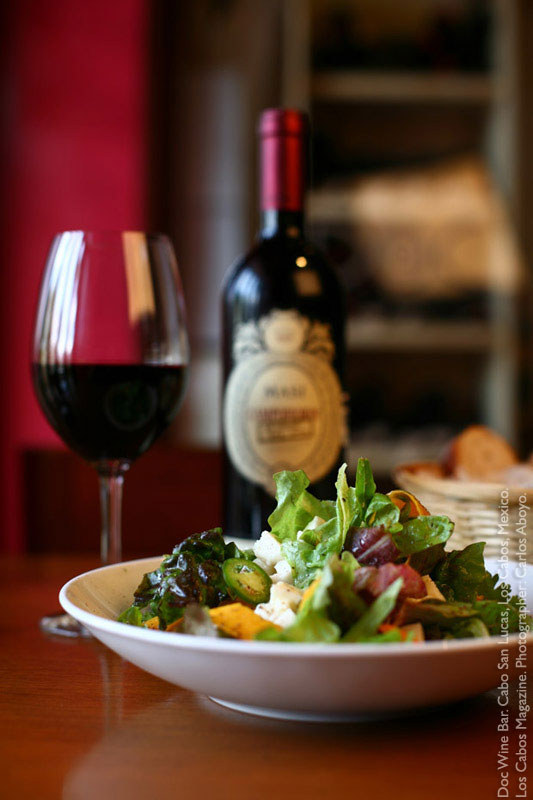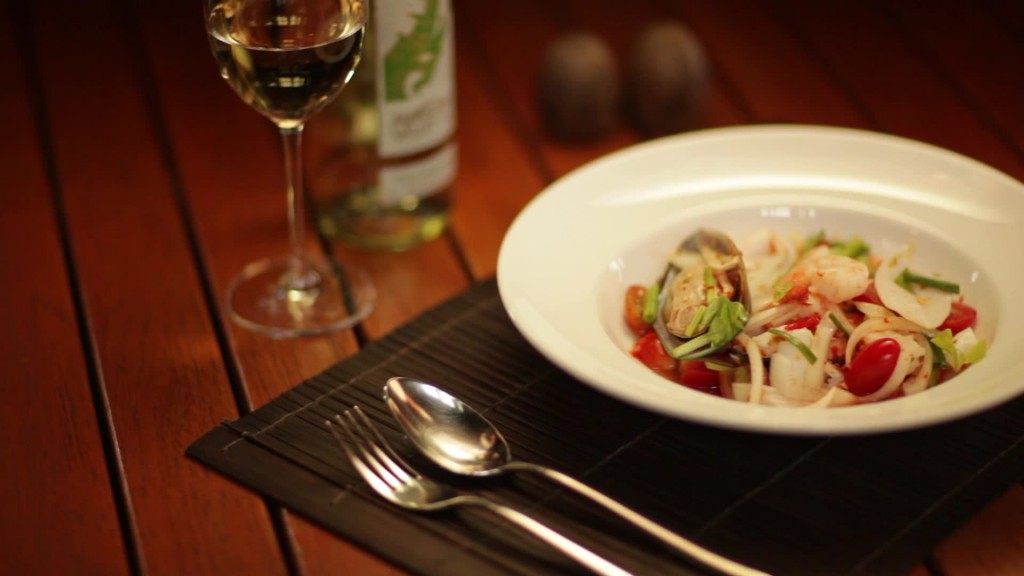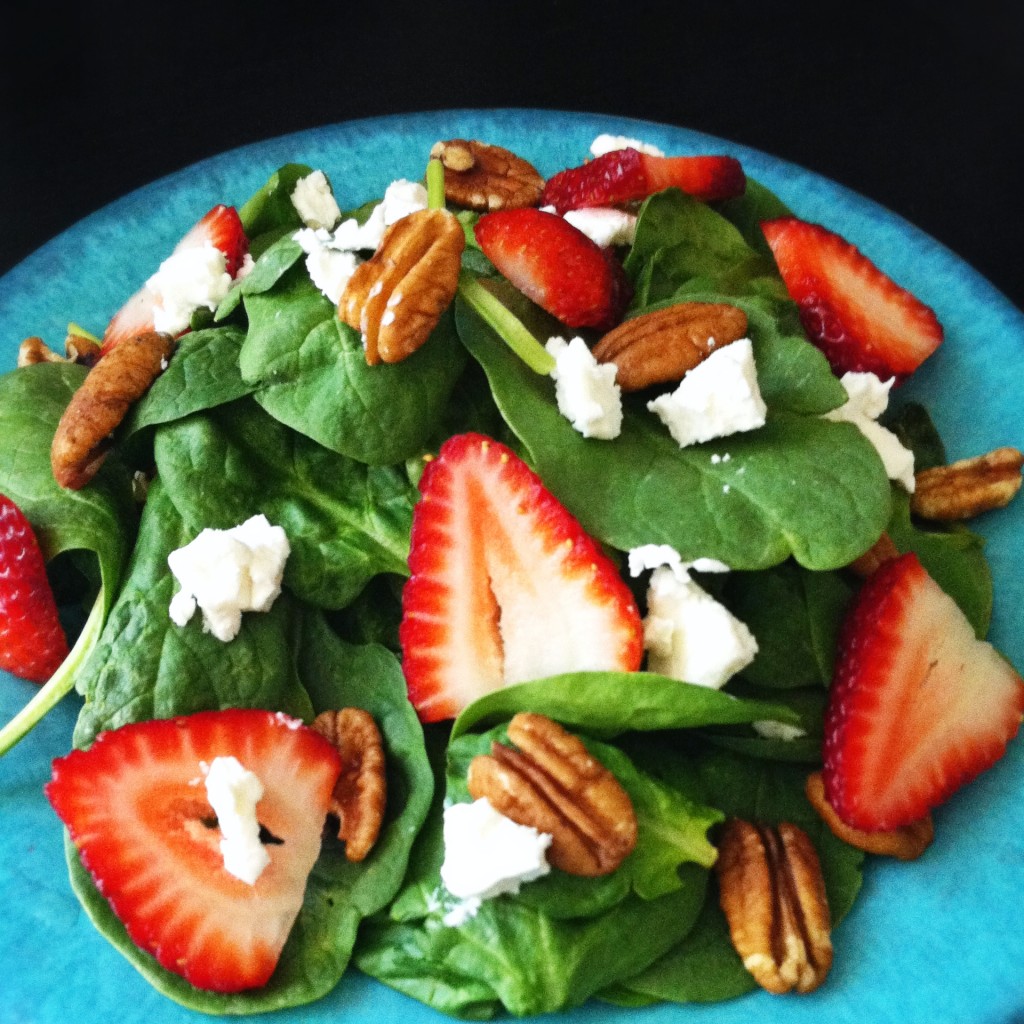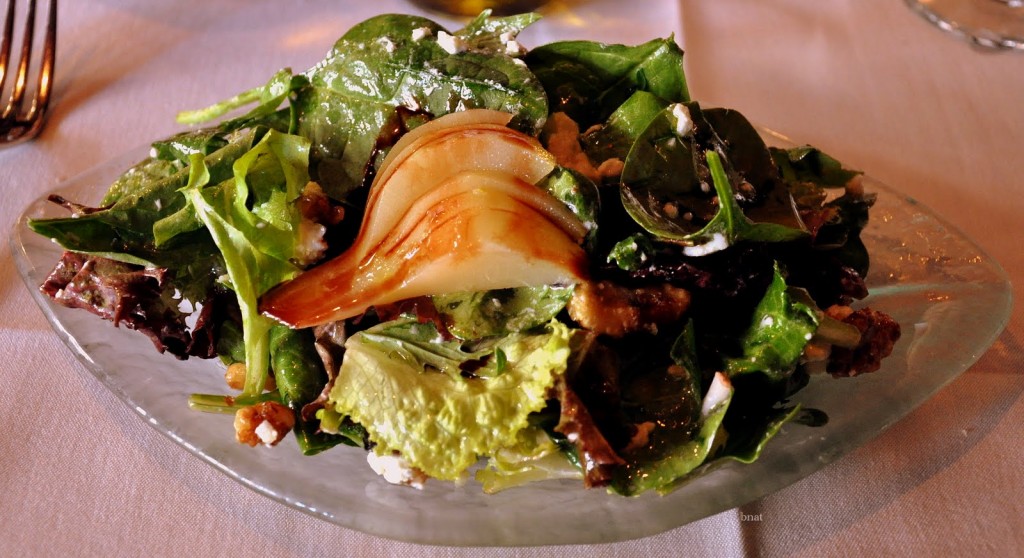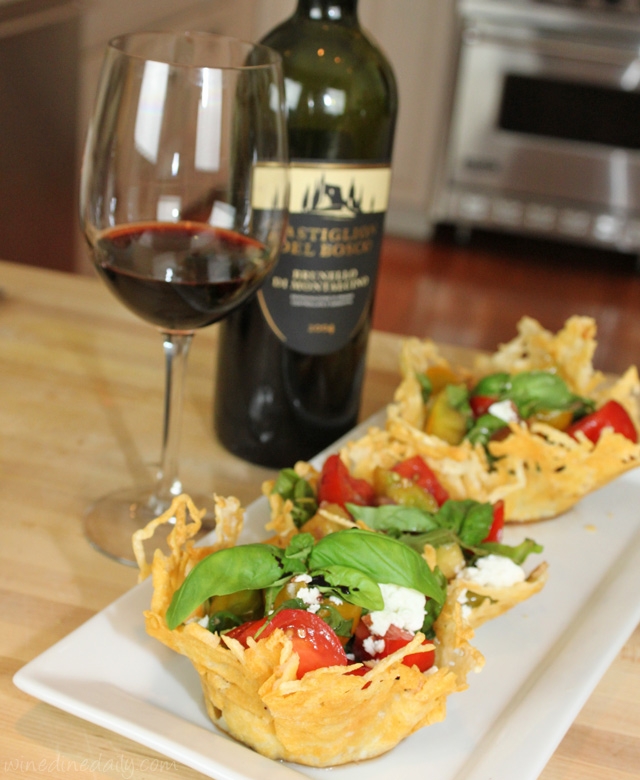Wine with Salad
Some dishes seem to go naturally with wine – grilled lamb chops with a big Cabernet; briny oysters with bone-dry Chablis; sweet, ripe pears with Sauternes; Caesar salad and… well, it’s not so easy with salad. In this category there are few classic food and wine partners because traditionally salad has been considered “unfriendly” to wine. Acidic dressings and raw greens and vegetables don’t flatter wine, so why bother? Conventional wisdom said just skip wine for the salad course, or sip a glass of sparkling water.
But there’s no reason to deprive yourself of a great glass of wine with a great salad, especially now that salads are much more than a plate of mixed lettuces that act as a palate cleanser. Today’s salads are main events, full of fabulous flavors and intriguing textures. When built with the right ingredients, they can be the perfect partners for a full range of wines, from crisp Sauvignon Blanc to buttery Chardonnay to earthy Côtes du Rhone. Even off-dry Rieslings and Gewurtzraminers can match salads that have sweet notes.
As with any food and wine matching, it is crucial to think about the relative weight and body of each half of the partnership. You don’t want a rich, oaky wine to accompany a crisp, light cucumber and watercress salad. Nor would a crisp grassy Sauvignon Blanc necessarily be right for a salad loaded with grilled shiitakes, duck breast and walnut oil. For me, however, the two keys to good salad and wine matches are making sure that there isn’t too much acid in the dressing and that the salad contains lots of “bridge” ingredients ingredients whose flavors and textures complement and contrast with (and in some cases mitigate) the wine.
Lose the Acid but Not the Zing
Let’s first talk about what a salad is. The simplest way to define a salad is dressing and lots of other stuff, usually but not always including some greens. The salad dressing is one of the most difficult components to coordinate with wine because of its very nature, which is acidic.
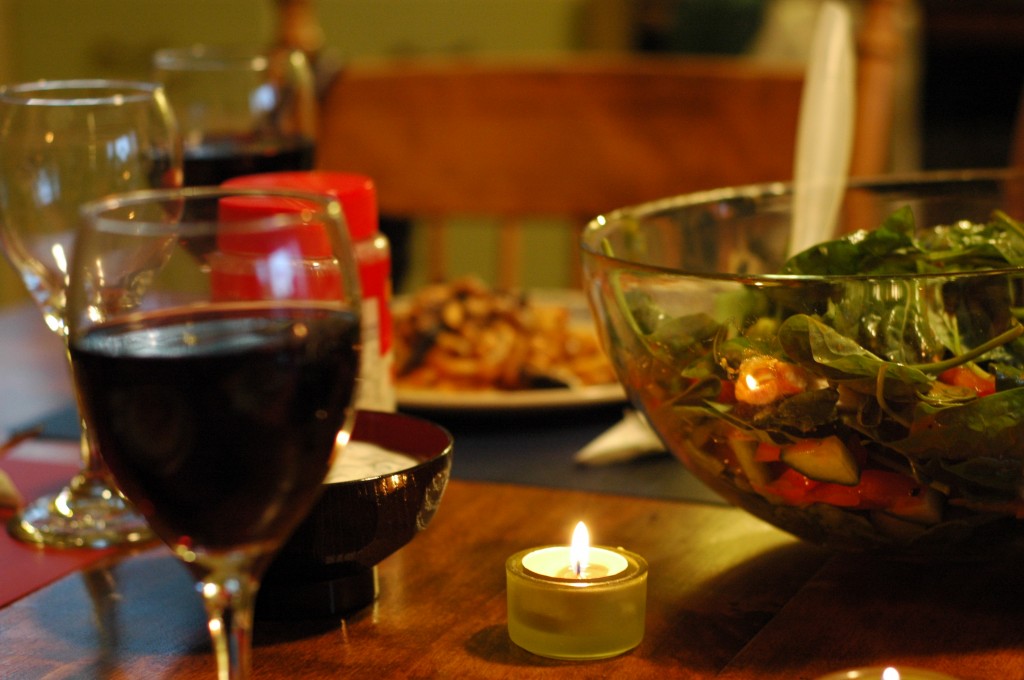
A straight “one part red wine vinegar to three parts olive oil” dressing is too sharp to work with wine. Too much aggressive acid will make the wine taste flat and dull, even when the wine starts out bright and crisp. The best advice is to avoid starting a “war of acids” between the two partners. A little bit of acid can harmonize beautifully with wine; just keep acids in balance.
The easiest thing to do is to just cut down on the amount of vinegar in the recipe, but you don’t want to leave your dressing without enough zing to taste good. Try using a more mellow vinegar, such as balsamic or rice wine, or look to other tart ingredients like fruit juice instead of vinegar. Or even use wine as the tart component in the dressing.
Also think about alternatives to oil used in traditional dressings. Try using liquids that pack a lot of flavor, like a few tablespoons of rich stock. One of my favorite tricks for reducing fat and adding rich flavor is to reduce good unsalted chicken stock by one half and substitute it for part or all of the oil in the dressing. When you do use oil, pay attention to the oil you choose. A super fruity olive oil or a toasty note from nut oil can make an important link with wine.
Going Beyond Lettuce and Tomato
Now let’s look at the body of the salad to see where it can become more wine-welcoming. Pay attention to the flavors of the greens you choose. Most grocery stores today offer more than the old standby Iceberg, Romaine and Bibb selection, and if you grow your own or have access to a good farmers’ market, you know that there is a wide variety of greens to choose from with all kinds of flavors spicy, peppery, nutty, tart. Keep these flavors in mind; too much of a good thing can overwhelm a subtle wine.
Key ingredients link the salad and the wine. Earlier I mentioned building a salad using “bridge” ingredients, which have a number of functions in a good salad and wine match. They can echo the flavors in the wine, such as fresh berries that pick up the ripe berry flavors of Beaujolais, for example, or a slice of sweet pear that’s similar to the sweetness in an off-dry Chenin Blanc or Riesling. Another type of bridge ingredient might contrast with – not echo – the wine. The heat of a serrano chile-laced dressing will play nicely off a slightly sweet, spicy, lower alcohol Gewurztraminer (the chiles’ heat tends to heighten the taste of alcohol in wine). Sometimes bridge ingredients can play down troublesome characteristics of the wine. For example, the tannins in a robust red wine would be too much for a simple salad of greens and vegetables, but some slices of rare grilled beef or a round of smoked mozzarella will make the tannins much milder and more agreeable.
Most of all, remember that pairing salad and wine is not rocket science. Experiment and have fun with it.
Dressings with More Flavor and Less Acid
A major problem in pairing salad and wine is the high acid level of most vinaigrettes, which wreaks havoc on wine, making it taste flat and flabby. You can avoid this conflict by making dressings that are less sharp but still vivid, with some of the following techniques.
Replace part or all of the red or white wine vinegar in a recipe with balsamic, sherry, or rice wine vinegar, which have fuller, mellower flavors.
Use fruit juice instead of vinegar. Obvious choices might be lemon or lime juice, but think also of orange juice, apple cider, cranberry juice or any fruit juice with a bright flavor.
Replace acid ingredients with other liquids that are intense, but not sharp, such as rich chicken, veal, fish or vegetable stock, Worcester sauce, soy sauce, juices from roasted meats or vegetables or roasted garlic purée.



 0
0